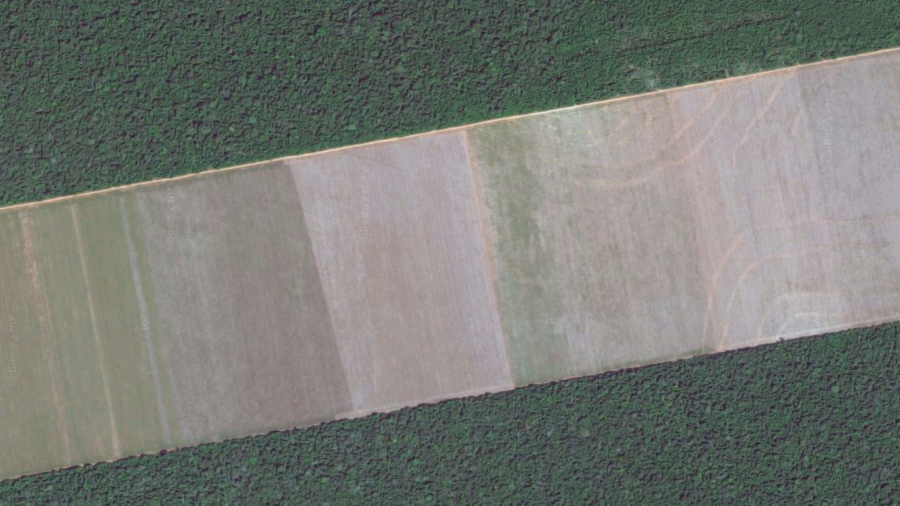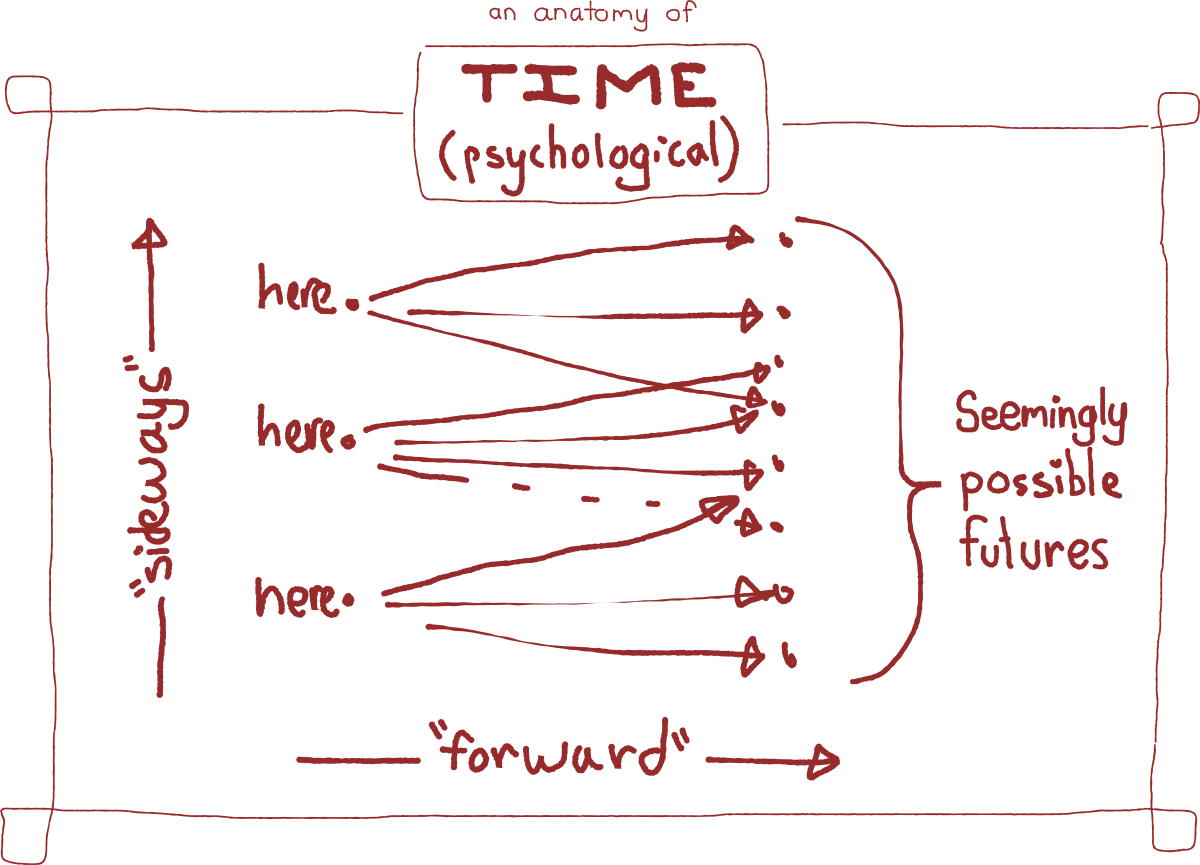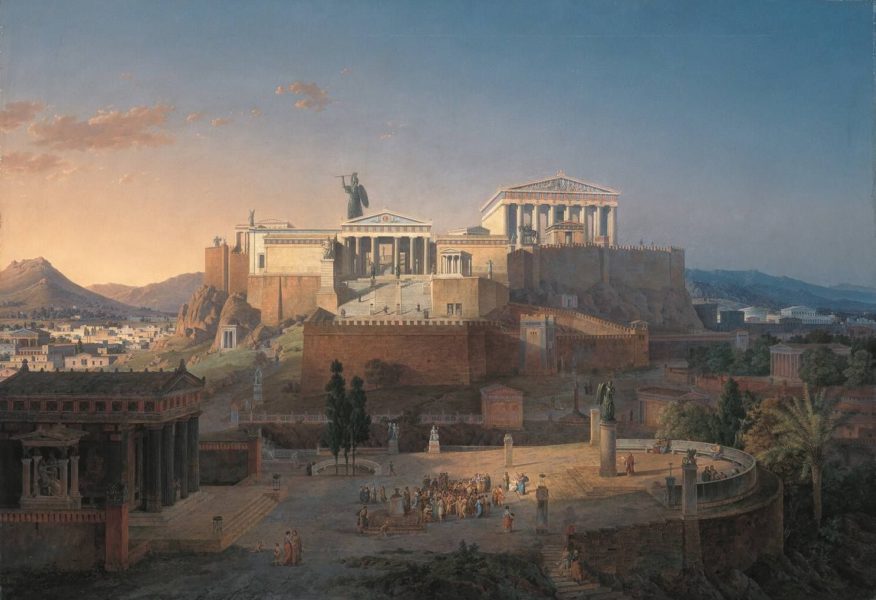Some days ago, as the hang-fire drama of the US election was inflaming the internet and crisis fatigue seemed to be gnawing an ever-widening hole in our collective mental health, I decided it was time to turn away from the news, take several deep breaths, spend a minute communing with any humans, pets, plants, trees, shrubs, or other living objects that were nearby, and think about what steps we could each take, without waiting, to pull democracy back from the cliff edge.
This post is the result. It is about six patterns of democracy that we can start building now — in our communities and organizations, and in our politics and nations — for a stronger and more powerful democratic fabric that both resists tyranny and sustains life.
Each of these patterns looks at a different facet of democratic process: scale, content, context, shape, mechanisms, and quality. They are not new. Each, in some way, is older than democracy itself. Once through them, we’ll look at how they can be combined to reinforce each other and move us toward a more just and beautiful world.
Scale: bringing democracy home
Attention, resembling gravity, seems attracted to bigness. As media ownership has consolidated into fewer and fewer larger and larger corporations, the topics that take our attention have also shifted toward distant, inaccessible political spectacles in which we are largely powerless, and away from decisions close to us where we can actually make a difference.
This is not a good thing for democracy. National politics is a veritable training ground for learned helplessness.
Countering this trend probably requires the banal but radical act of participating in the many layers of democracy that exist — or can exist — between us and our national governments. Cities, local councils, districts, and even provinces or states have much more accessible and flexible systems of democratic participation than nations.
It can be startling — even a little scary — to discover that one person can make a significant difference in a political process, possibly leading to the strange realization that the systems we’re in are not fixed, but are formed from human imagination and will. What alternatives can we imagine?
If frustrated with democratic impotence, we can keep reducing the scale until we find a place where our contribution matters. Perhaps that is at the level of city or district, neighbourhood, school or community organization. Perhaps it is in our own household. (A few peculiar households I know of have even built their own apps for this.) I think there is almost always such a place. If not, we can create it.
Power tends to flow up hierarchy unless it is reclaimed from below. By creating a context for hyper-local democracy, we can give ourselves not just a personal voice, but a collective voice that other levels of power need to contend with.
Context: building democratic economies
The conventional place of democracy is in making and enforcing rules, which is called government. But the entities that influence much of our lives are not governments, but corporations. And corporations are usually not democratic in any meaningful way.
This prevalence of undemocratic corporate power is at work in many of our most pressing problems, including polarization in politics, catastrophic inequality, climate change, and an epidemic of meaninglessness. The force of the market is supposed to provide a feedback loop on corporate behavior, but this logic demands that citizens — who care about all sorts of facets of the world around them — be reduced to consumers, whose care can only be voiced through shopping. We live in democratic nations, but in openly plutocratic economies.
There are alternatives. If we wish for a renewal of democracy, then finding, building, and supporting democratic enterprises is key. Usually these take the form of cooperatives. To grow economic democracy, we can certainly buy from these businesses. More importantly, we can participate in them, as members, employees, suppliers, and directors.
The combination of co-ops and the rise of businesses as platforms — containers in which exchanges between citizens occur — gives a wide horizon for rethinking conventional structures of corporate organization and power. Co-ops can become their own economies, facilitating rather than controlling flows of value among their participants.
Like in other contexts, economic democracy survives through use. We can inspect the economies around us—employers, suppliers of food, goods, media, medicine, ideas, services — through the lens of democratic agency, see what knobs and dials may exist there, and begin turning them.
Content: deciding about things, not just people
“Democracy” means rule by the people, but in most cases the scope of what’s called democracy is limited to choosing who will make the decisions for us. There is no practical reason why this has to be the case, especially in an era when we are all subject to ubiquitous, continuous digital opinion measurement anyway (in our interactions with social media, among other places).
Through ballot propositions and referenda, some jurisdictions do allow us to decide on some policy questions. The more local and frequent these decisions become, the more they can become the domain of human consideration rather than the domain of money and partisanship.
Switzerland, with its system of cantons, has been operating as a partial direct democracy for centuries. More recently Taiwan has made bold experiments in digital direct democracy in its vTaiwan program, using Pol.is for aggregating public opinion in ways that show where the less-polarizing outcomes might lie. Cities, notably Barcelona and Madrid, are at the vanguard of direct democracy experiments, allowing citizens to allocate portions of city budgets and vote on policy proposals. On the more radical edge, Rojava in Syria and the indigenous Zapatistas in Mexico have adopted federated forms of direct democracy in their semi-autonomous territories.
Making decisions about issues rather than personalities can break up the deadlock of polarization. When we’re not forced into a binary choice between two necessary evils, but can exercise our curiosity, vision, and opinions directly with substantial questions, we may realize that we agree in ways we didn’t expect.
For this to happen, such decisions need to be frequent and local enough that they don’t themselves become flashpoints for polarization. (Otherwise, one decision can become a proxy for multiple issues and grievances, as was arguably the case with Brexit and some other high-profile referenda.)
Shape: building horizontal federations
National governments are generally triangular in shape. A single head of state sits at the top, numerous minions at the bottom, and below that even more numerous citizens. This is generally not a very responsive shape for a power structure. The formal mechanism of feedback is the election, when the very bottom of the pyramid, in theory, gets to decide about the very top.
What other shapes could we go ahead and work with, since these triangular nation states don’t seem to be doing the job very well?
One possibility is to build horizontal power by linking together democratic organizations in different triangles. An example of this is the international coalitions of cities that are effectively undermining national negligence on climate change by enacting their own city-to-city agreements and policies. Another example is the New Economy Coalition, a 200-member coalition of grassroots organizations working for economic democracy and social justice. A historically powerful example is the labour union: a democratic coalition that forms horizontally across pyramidal boundaries, and by so doing changes the balance of power within those pyramids.
These horizontal coalitions can happen at any layer of the pyramid, from provinces, to cities, organizations, or even citizens (as campaign groups like Avaaz have amply demonstrated).
Horizontal coalitions can start to reduce our dependence on states or corporations to do the right thing, and let communities of practice or context build shared commitments and strategies across pyramidal boundaries.
One way to do this is to look at whatever movements or groups I am part of and ask: who is doing similar work or facing similar challenges elsewhere, and how could we help each other?
Mechanism: beyond the binary vote
As Pia Mancini has eloquently pointed out, our mechanisms of democratic engagement are horribly out of date. They were designed before computers, calculators, telephones, or automobiles, when logistical constraints made simplicity paramount, and elitism intentionally restricted the scope of democratic input.
Outside of politics, some progress has been made on new ways to bring together human judgements in the past three centuries.
These innovations include:
- “Liquid” democracy, where voters can entrust their votes on specific questions to trusted contacts who know about the topic at hand — a possible voluntary compromise between direct and representative democracy;
- Score, ranked choice, and other non-binary voting methods, which give a more nuanced means of entering input and capturing the collective intelligence of a group
- Conviction voting, which aims to reduce the effect of short-term swings of opinion by giving more weight to stable positions
- Multivariate decision systems like Ethelo or Pol.is, that facilitate finding common ground and less-controversial outcomes that are invisible in simplistic voting systems
- “Swarm” decision making tools that give real-time feedback on collective judgement, which seems to increase the accuracy of some collective decisions
Though the results of small experiments with these mechanisms are promising, most of them have never been tested at scale.
As we introduce new layers of democracy, we can also introduce new mechanisms that give a more nuanced and intelligent way of combining many voices into one choice. The design of democracy ain’t over yet.
Quality: rediscovering how to listen
Finally, let’s consider the quality of the deliberation that leads to, through, or from a collective decision. A vote is an extraordinarily low-bandwidth form of communication. Sometimes this is good (for example when independent input is needed on a simple decision), but if we want to build stronger democracy from the bottom up then we also need to (re)learn how to do civil, qualitative, inquiring dialogue that brings us into the perspectives of others.
Indra Adnan and The Alternative UK‘s dialogue events and Nora Bateson’s Warm Data Labs are two striking examples of how this can be done. Listening is powerful, both for the hearer and the heard. Trust the People, a spin-off from the Extinction Rebellion movement, is leading trainings and facilitating groups around the world who are rebuilding habits of deliberative local democracy using citizen assemblies.
In small groups that know how to use it, consent decision making is an efficient method of making collective decisions that avoids both the tedium of consensus and the polarization of majority votes. For day-to-day operations in many democratic organizations (particularly those practicing Sociocracy) it is the go-to method for making effective, inclusive decisions. In tandem with this, speaking in “rounds” gives time to be heard and time to listen — important in building trust in small democratic groups, and aiding the balanced input that’s been experimentally shown to support, or at least correlate with, improved collective intelligence.
Weaving the threads
Those of you who have made it this far may rightly be asking: so what? If we do all these things, somehow, how will that prevent, for example, the election of another Donald Trump?
It is a fair question. It’s difficult to know for sure what patterns of causation have led to the current state of politics in the USA, or other places with similarly troubling trends. But, making a few plausible guesses, we can look at how the positive feedback loops holding the current state of politics in place could be interrupted by these six patterns.
Historically, it seems that populist politics emerges out of a flammable mixture of economic distress (the real or perceived threat of economic hardship), political disempowerment (the sense that the powers that be are not listening or accessible, or are following their own agendas), and the existence of some other, whether internal or external, that can be blamed for the state of affairs.
This mixture becomes more incendiary when inter-partisan communications break down, and views about basic facts of the world become divergent among political camps. This can happen through partisan media, through social media filter bubbles, or through social divides that stymie communication (for example between ethnic groups, classes, or geographies).
Democratic localization brings politics to the level of real people, where abstract categories (“Liberals” or “Immigrants” or “Trump supporters”) are less believable. Humans never quite fit the one-dimensional labels we put on them, and the more the subjects of those labels are our neighbours, and we’re interacting with them rather than talking about them, the less divisive power the labels have.
Economic democracy intervenes in the feedback loop between financial hardship and reactionary populist politics. Democratic enterprises give scope for participation in economic solutions that don’t involve blaming immigrants, fighting over state support, or placing responsibility on far off and inaccessible corporate masters.
Direct democracy can dilute polarization by removing the artificial grouping of issues around party policies. Is a correlation between “family values” and climate change denial really coming from voters’ beliefs, or is this an artifact of party groupings? Separating the two can let us get to the needs and values that are obscured by polarizing categories, and allow people an avenue of engagement that’s not tied to zero-sum opposition.
Horizontal coalitions help all of these other patterns spread across contexts, replicating things that work from one place to another.
New mechanisms of democratic decision-making can help expand the ambit of democracy without making it onerous. This is important, because one of the greatest impediments to participatory democracy in practice is how much citizen attention is required to make it meaningful.
High-bandwidth, qualitative engagement encourages actually coming to understand and appreciate the context of opposing viewpoints.
These six alternatives are not a panacea, or a replacement for current electoral systems. They are each a facet of democracy that can bear its own fruit. When combined, they make a fabric of democratic culture that could not only help stave off authoritarian decay, but also give us more vibrant, engaged, intelligent, and capable citizens and groups.
Strangely, the value of democracy is something that most of the political spectrum seems to agree on. Isn’t it peculiar, then, that no party has made the expansion of democracy part of its platform? Of course it doesn’t take much cynicism to see why this is. Real democracy undermines the monopolistic power of party politics. We cannot expect politics, which is powerful in inverse proportion to the degree society is democratic, to protect or grow democracy. We have to do it ourselves.
If we believe in democracy, we need to make it more than just an idea we act on at election time. We need to make it part of our lives. When we do that — with the appropriate structures, and in a context of efficient decision making and execution mechanisms — we are giving a much, much stronger shove-off to authoritarianism and tyranny than anything that happens at the ballot box.
Democracy is contagious. It’s also delicate. The R of democracy is entirely dependent on the enthusiasm and integrity with which it is done.
Reprieve
On November 4th, when it appeared that Donald Trump may have, by some ghastly force, gained a second term in office, there was a gloomy mood in this house. One housemate donned a sloth-shaped “onesie” and brewed a large amount of tea. Another asked a Tarot deck how to resist blunt power.
Eventually, the US election made a gradual and nail-biting turn to the left, and the mood lifted. The house had music in it again, and someone baked a chocolate cake.
The world is in rough shape. We’ve been hammered by a pandemic, garish police brutality, social unrest, reactionary populism, fires, and the smoldering threat of climate change. We live in times of crisis. Still, there has hardly been a more appropriate moment for building alternatives to systems that are obviously broken.
Crisis or not, it is business as usual that is taking us into a hellish world. National election victories don’t change that unless they are followed up with systemic change. Let’s step off the train and use the opportunities we have to make a deeper democracy real.




